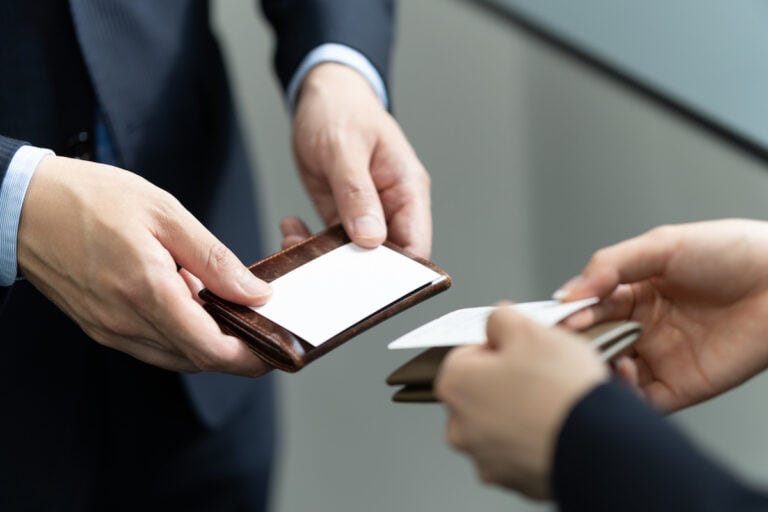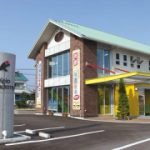
Business introductions can be nerve-wrecking. It’s imperative to be confident and make a good impression. But there is even more pressure when you are introducing yourself and your company in a different country!
Dress to impress
Office wear in Japan is usually formal. Perhaps smaller companies or young start-ups may be a little more flexible. However, be sure to wear a formal suit for any important business introduction.
If you have lived in Japan, you will be well aware of the scorching summer heat. Most companies allow ‘Cool Biz’ (cooler, casual work clothes) to survive the heat. But please be wary of cool biz if this is a first meeting. Try to opt for short sleeved shirts that still have a collar.
Also, be prepared to take off your shoes. This is especially true if you are unsure of the venue’s footwear rules. Wear your newest (and cleanest!) socks for the occasion. Ladies, if you wear stockings, bring a spare pair or an extra pair of socks. You don’t want the awkward embarrassment of hiding a hole during your important meeting!
Be on time!
In Japan, ‘if you are on time, you are late’. This may seem strict to foreigners, but it still holds true in many Japanese business events. However, please don’t be too early and surprise your unprepared hosts. The optimal time to arrive is 5 minutes before the meeting start time.
Get into Position
Ok! You have arrived, ready and eager. How do you begin?
First, get into position. Always stand up if you are introducing yourself or others. Even if the others are sitting, it is best practice to stand with good posture.
If you have colleagues joining you, it is best to line up in order of superiority. This is because you should introduce each person in order. This expectation comes from the strict power-distance in Japanese culture. Introducing each person by their rank shows respect and humility.
When you introduce each person, include both their name and their job title. If relevant, you can also add a little fact about each person. For example, you may reference a similar project that the colleague worked on or how long they have been with the company.
When seating, be mindful not to just grab the nearest available chair! The person leading the meeting (議長) will be in the center position. The highest-ranking person will be sat next to the gicho.
Do I need to bow in a Japanese business introduction?
Yes. Some Japanese companies may not expect you to bow. Before the Covid days, you would often see Japanese management offer their hand to shake in the western style. However, even if you are a foreigner, bowing is a smart approach. It shows graciousness and consideration for your Japanese host.
To give a respectful bow (“keirei”), keep your neck and back straight and bend from the waist at an angle of 30°. This sign of humility is sure to give a good first impression!
Business Cards
There is a certain reverence with regards to business cards in Japan. You may have heard of the rules of ‘meishi’ (名刺) before. Here are the basics:
- If you are selling something or requesting a contract, you will be expected to give your card first.
- When giving your business card, hand it to them face up, the text facing the receiver. Hold the card at the bottom corners with both hands.
- Bow humbly as you hand the card to them.
- Do not hand it over too fast or too casually. This looks arrogant or presumptuous.
When you receive a business card:
- Take the card with both hands.
- Look the card over. Take a little time to read the details or admire the style.
- Place the card in a case, if possible. Do not put it in your wallet or your pocket.
- Do not write notes or stain the card.
Watch your body language
Keep in mind that harmless gestures in your home country may be interpreted very differently in the business world of Japan.
For example, blowing your nose. It in the west, this is widely accepted. In winter, it is often very necessary! But in Japan, blowing your nose in front of others seems a little dirty and unhygienic. If you can, go to the bathroom to blow your nose. Otherwise, it is perfectly ok to sniff as often as needed!
Also, keep your hands out of your pockets. Casually tucking your hands in your pants looks a little disrespectful and belligerent. Even the Tokyo Governor was heavily criticized for putting her hands in her pockets during a Tokyo Olympic event.
Finally, don’t point! Pointing at person, place or object with one finger is very direct. It can also be interpreted as aggressive. If you must gesture, try to use open-handed motions with your palm facing upwards. This looks a lot more friendly and trusting!
We hope this article has helped guide you for your next formal business introduction! If you want to learn more about business culture in Japan, browse our other working in Japan articles. Our writers have years of experience working and living in Japan.















